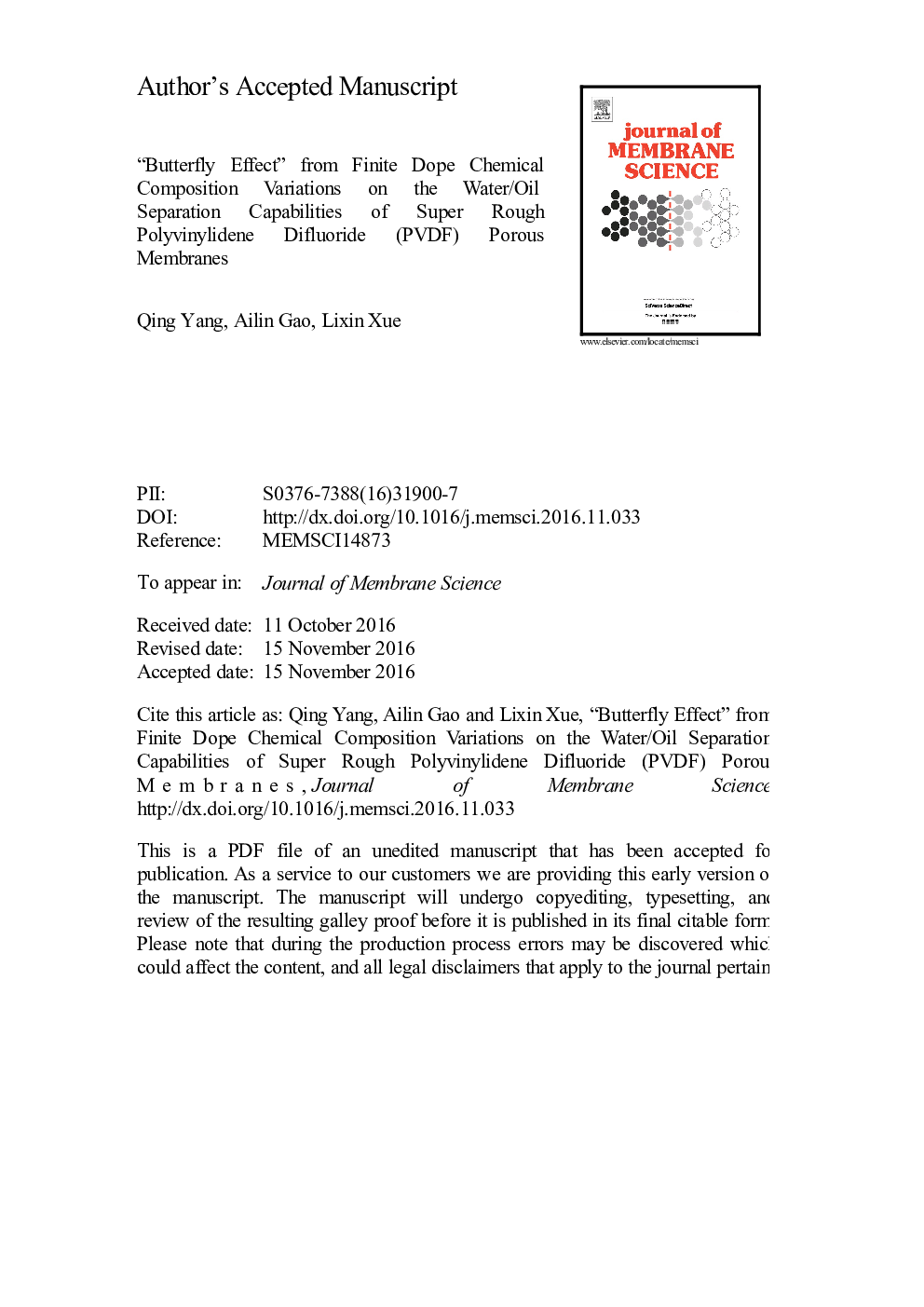| Article ID | Journal | Published Year | Pages | File Type |
|---|---|---|---|---|
| 4989208 | Journal of Membrane Science | 2017 | 21 Pages |
Abstract
Polyvinylidene fluoride (PVDF) porous membranes with superwetting amphophilic surfaces were prepared by in situ cross-linking polymerization of varied triethoxyvinylsilane (VTES) and N-vinyl-2-pyrrolidone (VP) composition ratios during none-solvent induced phase separation (NIPS) processes, utilizing template stripping method. The extreme powers of surface roughness, in amplifying the finite differences in chemical composition of initial dope solution to the properties of the resulted membranes, were revealed by comparing the structures and surface properties of these membranes with super rough surfaces, to their analogues with medium-rough surfaces and films with smooth surfaces. “Butterfly Effect” was observed on the water/oil separation capability of the formed PVDF membranes from the finite variation on the initial chemical composition caused by the change of VTES/VP molar ratio in the dope solution from 0 to 0.33, 0.38, 0.43, 0.48 and 0.53. Huge variations in the oil and water fluxes and removal efficiencies in separating water-in-oil and oil-in-water emulsions of the formed membranes from the “Butterfly Effect” were studied relating to their differences in water-in-air contact angles, oil-in-air contact angles, oil-in-water contact angles and water-in-oil contact angles as well as pore sizes and surface roughness.
Related Topics
Physical Sciences and Engineering
Chemical Engineering
Filtration and Separation
Authors
Qing Yang, Ailin Gao, Lixin Xue,
